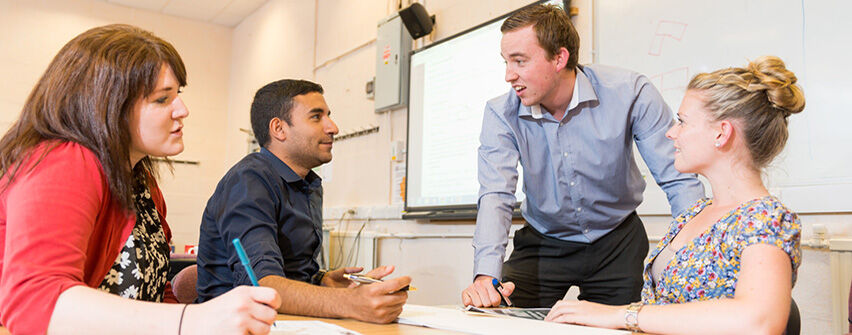
Blog

Inspired by a Co-MAP research dissemination event, this blog post reflects on a teachers’ experiences of working during the COVID-19 pandemic amongst a backdrop of school closures and disruptions to typical working patterns. This blog post focuses particularly on the concept of ‘hybrid’ working and explores the concept of ‘hybrid’ teaching and learning in the context of the blurring of teachers roles prior to, during, and beyond the pandemic.
I started out my education career as a teaching assistant in a primary school in London. I remember an early conversation with a colleague as we were walking between sites on a school trip and guiding the children across busy roads, taking head-counts at every opportunity, and generally navigating the hustle and bustle outside of the school gates.
“We don’t only teach the children, you know that right?”
“Of course,” I replied. I was still fairly new to this world of teaching but already that morning I’d sourced sixty lunches from the school kitchens, counted and re-counted asthma inhalers, and topped up my first aid kit with plasters and sick bags for the day ahead.
“We’re also traffic marshals,” she said as she outstretched her arms to halt traffic. Once both classes had safely crossed she had to jog to get back to her original place in the line, adding, “and long-distance runners!” as she passed.
I joined in and we continued back and forth, noting our seemingly endless and varied roles at each opportunity, from stopping for another head count (“Accountant”), rounding up children to get onto the bus (“Shepherd”) and checking seat belts (“Safety inspector”), to administering the inevitable sick bags when needed (“Medic”).
And so on throughout the day.
That thread of conversation continued beyond the school trip into staffroom chit-chat and eventually followed us into teacher-training. All teaching staff know that there is far more going on in state education than meeting set objectives of the National Curriculum. We are role models, counsellors, social workers, life-coaches, family therapists, interpreters… the list goes on.
The point is that, whether on a school trip or typical day in the classroom, getting children from A to B in education is never quite as simple as you might think and involves staff taking on multiple roles and responsibilities to achieve our aims.
I thought about this moment recently after attending a Co-MAP research dissemination event entitled “How has it been for you? Schools' experiences of the Covid-19 'school closures'”. The event touched on many issues affecting schools that manifested during the pandemic: the ‘digital divide’, the concept of ‘learning loss’ or ‘catch-up’, and how different vulnerable groups were impacted by disruptions. It led me to reflect on my own time as a class teacher during the pandemic, particularly regarding the blurring of teachers’ roles, as well as the concept of ‘hybrid’ teaching.
The word ‘hybrid’ is synonymous with mixtures, fusions, and combinations. The concept can conjure up images from ancient Greek mythology: the chimera with its mix of lion, goat and snake parts; the gorgon, whose hair was made of live, venomous snakes; or the Minotaur, which was formed part man and part bull. ‘Hybrid teaching’ is a recent concept that describes teaching groups online and in-person, adding arguably more than a new role for teachers. In some ways it involves an entirely new way of thinking about, planning and facilitating learning… quite the beast.
Hybrid teaching as we now know it came after months of disruption to usual working patterns that challenged me and my colleagues in new and novel ways. Early on in the pandemic, my job involved teaching a mixed class of children from Nursery to Year 6 in one group. Later as guidance changed and a few more children were allowed on-site, this age-range narrowed to key stage groups.
While it was not something anyone was used to, and a difficult and uncertain time in many respects, the disruption presented possibilities for new pedagogical pathways. And, while sibling rivalry in the classroom is not something I would look back too fondly on, there were often incredible moments where children of all ages could collaborate, teach one another, and develop nurturing, compassionate bonds unlike those seen in a typical classroom where children are all within the same age bracket.
Schools returned to something we might call more normal in September 2020 with more children in school than at home, though numbers dwindled and varied due to changing infection rates. Sometimes entire bubbles would close and other times the entire school would close. This made planning a difficult task as lessons needed to be both classroom-friendly and home-ready, limiting the scope of what a lesson might look like and limiting the ways in which we might interact with knowledge as a group in that lesson.
My own attempts at synchronous hybrid lessons, involving some children learning in-class while others joined via Microsoft Teams, were laughably chaotic. If it takes a good five to ten minutes to even know whether everyone has something to write with at the start, you know things are going to be tricky throughout the lesson. With the camera plugged in at the front of the classroom, children at home had limited scope and could only really see a skewed vision of the whiteboard or a handful of their classmates.
Even after resolving some of these technical issues, there were still problems with hybrid learning in that there were effectively multiple classes in one room – the in-person class and the digital class. Clarifying something might involve repeating to the digital audience what I’ve just said before. Not only was I responsive to children in the room with me, I was checking ‘hands up’ and chat messages in the digital classroom too.
Reflecting on the experiences shared during the Co-MAP dissemination event, I can see how some of my own experiences were similar to teachers in parallel situations. To some degree, teaching has always been a job of hybrid roles and responsibilities. But the pandemic pushed this to new limits.
The Co-MAP dissemination event drew on real teachers and their real experiences. In telling their stories, teachers commented on how they had to adapt to working within online landscapes as new situations emerged, they illustrated how their day-to-day work changed in temporal ways due to being connected more than ever to their classes, and they discussed how their learning spaces – both online and offline – increasingly became spaces of pastoral and social care.
Hybrid creatures are not always monsters like chimeras, gorgons and minotaurs, but they are mythical creatures nonetheless. While myths can be useful for sharing values and beliefs within cultures, too often myths can be told about teachers – with polarising stories that present teachers as heroes or villains. Too often, teachers can easily internalise false narratives from media portrayals about them and their work, which is often dissonant with how they act professionally within their daily lives.
So, it’s important to seek out and listen to those real stories from real teachers. It was through listening, showing compassion, and acting on what the reality was in front of us that allowed teachers and schools to help children and their families during the height of the pandemic. It’s those skills that we can celebrate and nurture moving forwards, listening to our students, parents, and communities – and perhaps listening to ourselves a little more too.
